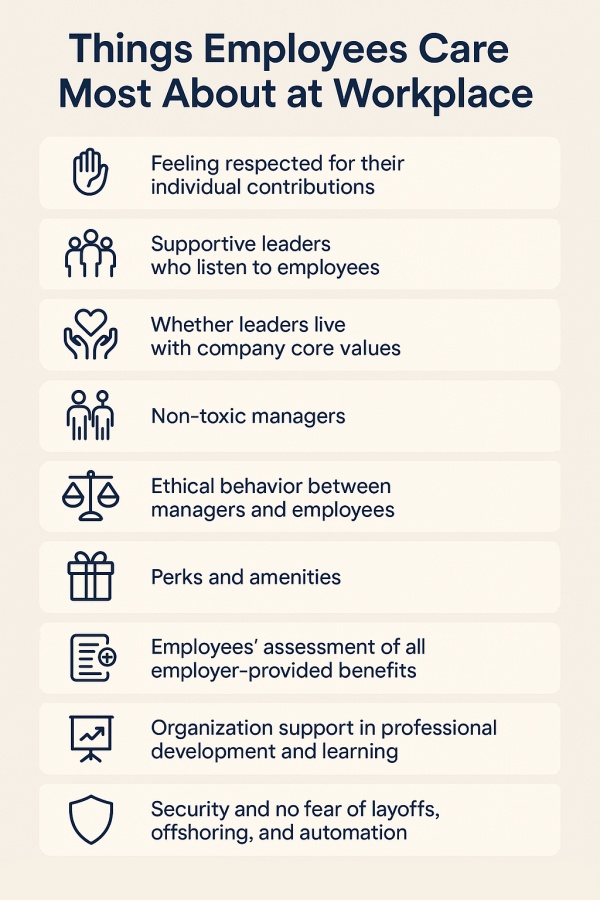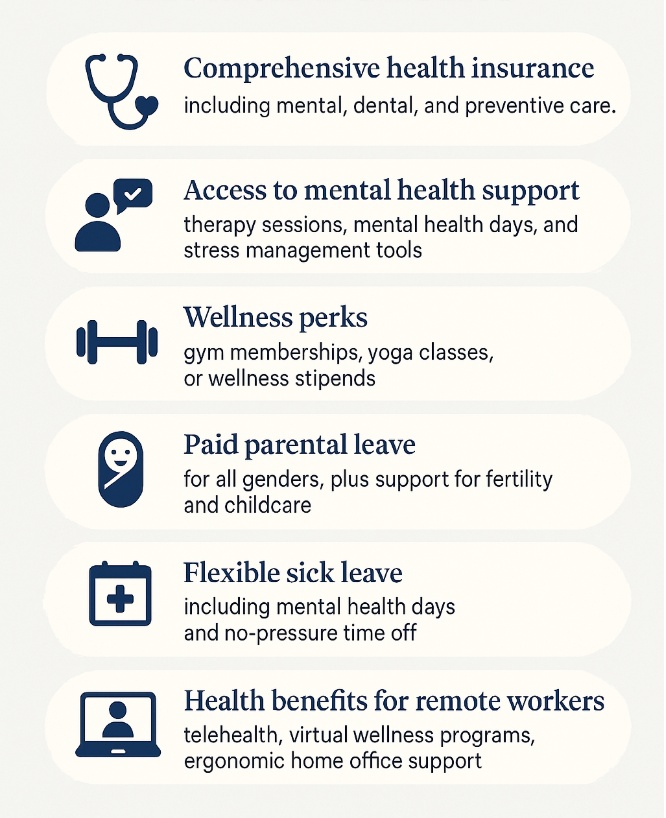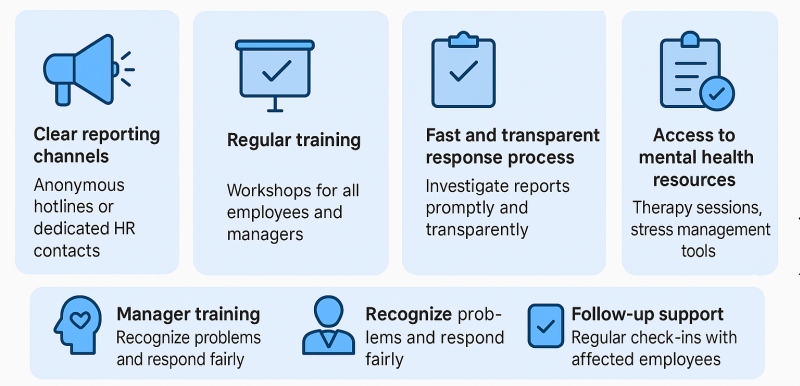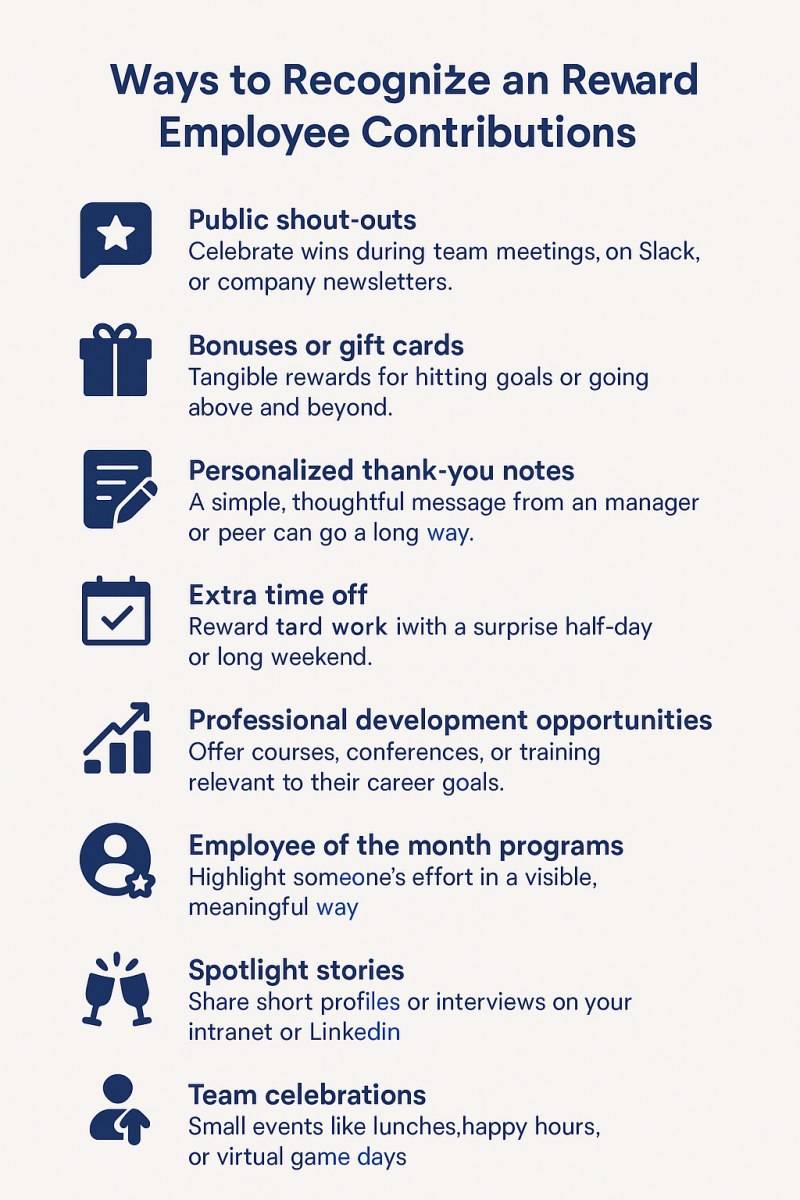The world’s best talents aren’t interested in your perks. Unlimited time off, free lunches, or even a dog-friendly office sounds great, but relationships are what attract and hold people within a company. Talents value open communication and feeling trusted, heard, and seen. Especially when the business encourages their personal and professional growth.
That’s a key sign a company has a positive work culture.
Surely, perks are a must-have. But it is on the surface. The foundation of your corporate success is mutual respect, transparent management, shared goals, and focus on people.
In this article, our team collected for you the best practices on how to build it.
But first, let’s check if we’re on the same page about basics👇
What Is a Positive Work Culture?
It is a shared set of company values, attitudes and initiatives that guide workplace processes and employees behavior. It includes expectations of their performance, interaction with one another, customers, and the way you treat them all.
Considering the diverse and evolving nature of society’s worldview, corporate culture is a must. When each of us can treat the same notion in a number of different ways, it helps people understand how to do their job exactly in a way a company expects.
Here a great example of positive workplace culture is OKG technology company👇
The first day of its employees, especially newbies, starts with a warm welcome. In such a simple way, the organization forms the first impression and helps to feel connection with teammates. OKG shows readiness to assist their workplace journey any second. But on demand only, without micromanagement vibes.
Another interesting thing is titles in the company. It’s a form of “who you are” being transparent about what each person brings to the table every day.
On top of that, every employee has easy access to mental health support and money rewards for being a part of a mentor.
Seems to be standard things, but combined with constant company values and workplace activities it gives people that feeling of being safe, recognized, and desire to grow together.
Thus, OKG is an example of the work culture prioritizing mentorship and teamwork. But, there are three more types:
- Market culture prioritizing competition and profitability.
- Adhocracy culture that is focused on taking risks and innovation.
- Hierarchy organizational culture that prioritizes stability and structure.
Despite such a variety, there’s a common aspect uniting them all 一 structure.
TOP Elements of Work Culture
Below are things employees care most about at the workplace:
And that’s not our imagination, but a fact from MIT Sloan School research.
When talking about a positive work culture, people’s most frequent phrases were “friendly,” “collaborative,” “flexible,” “fun,” and “inclusive.” And the most important, they expect to see it first at the C-level.
Here is what happens when these requirements are met 👇
Why Is a Positive Workplace Culture Important?
Employees that are happy with their work deliver better results. 88% of employees and 94% of executives agree that a positive culture is important.
But success is a generic term. Here is a detailed list of benefits you organization can get:
- Employees engagement into work processes. At work people want to feel valued and rewarded for their ideas. The more managers and leaders support employees, the higher their enthusiasm and motivation to deliver results.
- Reduced burnout. $300 billion a year you can save by just reducing stress at work. Positive work environment that supports work/home balance, encourages their ideas, gives people flexibility where to work saves them from mental illness.
- Better productivity. People who are happy with their job perform 13% better than those who work in a toxic workplace culture.
- Growing revenue. Organizations that show recognition to their employees are 21% more profitable than those who still hesitate about company culture implementation.
- Increased employee retention. A strong work culture provides advancement opportunities – one of the main reasons keeping people at the company. 63% of respondents highlight the importance of this aspect.
- Easy talent attraction. 77% of applicants consider a positive company culture as one of the key factors when accepting a job offer.
Despite all the benefits, there are companies still hesitating about its implementation. That’s a mistake. Things like an employee recognition program, care for their wellbeing, effective leadership, and professional development should start from day one of the company’s existence.
Creating a Positive Work Culture: 13 Expert Tips
Achieving positivity requires a list of actions from both a business and employees. And I’m not talking about the HR team only. Workplace culture works only when everyone lives its core values, starting from the leaders.
When done right, it boosts employee engagement, builds transparency across the organization, and leads to higher satisfaction, better culture fit, and increased productivity. It’s the kind of culture that supports both employee growth and business goals.
Define Your Company Mission and Values
Start with analyzing key aspects of your business identity 一 mission and values. It’ll be the foundation of everything that happens within your organization, motivation that makes employees excited to accomplish great things at work.
Thus, Spotify aims to unlock the potential of human creativity, Nike works to bring inspiration and innovation to every athlete, and Walmart’s mission is to save people money so they can live better.
Among the great examples of these values are companies like Netflix encouraging independent thinking and curiosity, and Canva’s attention to collaboration and creativity.
Where to start? Collect your C-levels to think over WHAT IMPACT you want to make. Then, define values that reflect HOW you work together to achieve it.
Shape a Workplace Culture That Fits Your Values
When your mission and values are ready, think over their real life implementation at the workplace.
For example, how will the “transparency” value work in real life?
It can mean regular sharing of the organization wins and losses openly and being honest with employees on a company call. Speaking about the team level, it should be easy to access for everyone documentation about business metrics, decisions, tactics.
The “customer obsession” value can become a part of every department workflow — not just support or sales. Thus, the product team should invite customers into early testing phases. Developers mark the bug fixes as high priority tasks in their sprint.
Your task is to move from vague ideals to actions. Company culture values and mission should guide how people work, communicate, and make decisions when no one’s watching.
Focus on the Customer
A positive business culture isn’t just internal communication of your employees. It’s also about how they think about the customers they serve.
Here are some ideas how to achieve this:
- Make a customer person visible in everyday meetings by regularly sharing their feedback and support stories.
- In addition to big revenue wins, celebrate moments when an employee went the extra mile to help a user succeed.
- Every department, not just sales, marketing, and support, should understand the customer’s journey and pain points.
Building a customer-oriented culture means everyone can see how their role impacts the customer experience. The result: when your work environment reflects your commitment to the people you serve, the business success follows.
Outline Clear Goals for Each Department
Predictability is a vital element of the positive employee experience at work. Outlining clear goals for each department is about your employees’ well-being and creating a safe environment without stress.
A great role in employee engagement to achieve the company growth goals is their alignment with a person’s long-term career aspirations. Let’s say, there are engineers who want more visibility into customer impact and opportunities to contribute to UX decisions. Here is an example of the goal for such a team: “Shape 3 UX improvements per release cycle.”
But for this you should listen to your talents and maintain transparency as core values of your organization.
Encourage Open and Frequent Communication to Build Trust
Transparent communication at all levels is a must. It can be monthly newsletters or calls about organization goals or changes where each department shares their achievements, losses, customer stories, etc. On the team level it is good to have truthful conversations about employee experience where everyone can share their ideas, feelings, and ask for support.
Engage employees to share their thoughts during such meetings, answer their questions. In such a way you’ll foster a sense of belonging.
Ensure Managers Share the Company’s Mission & Values
Workplace culture implementation success starts at the leader’s level. Exactly these people should deliver its statements into everyday actions and decisions.
Action plan: run a series of workshops, training, or meetings where C-level employees can share challenges and ask for advice. Ideally, it’s better to invite a company culture expert for a masterclass.
Managers that trust the workplace culture statements turn into its ambassadors. They inspire their teams performance and support employee satisfaction level.
Embrace Diversity and Inclusion within your Organization
Inclusive culture is about a positive environment for individuals from all backgrounds. It’s not only about recruitment strategy, but celebrating their differences as well.
For example, promote inclusive language by encouraging employees to share their pronouns at the workplace. One more idea is to create a committee for reviewing and implementing diversity initiatives at a company.
Invite Employees to Share Their Ideas Freely with Leaders
For some of us — introverted people like me, for example — speaking up can be very difficult. Even when we have great ideas, we might choose to stay silent rather than share them. The same thing happens when we’re unhappy with certain decisions made by the management.
The result? Unsatisfied employees and lower performance.
A positive workplace culture creates an environment where everyone feels safe to speak openly, regardless of their role or status. No pressure, no force.
Action plan: It has to start with C-levels. They need to genuinely want to hear employees’ feedback — and respond to it constructively.
Provide Meaningful Health Benefits
A company may have issues with providing its employees with extra paid time off or a great salary growth index, but there must be things like care about their well-being and health. Here are the most popular formats your organization may offer:
The benefits package is one of the factors of accepting a job offer. 81% of survey respondents agree on that. If the traditional group health insurance is too expensive for your company, try a health reimbursement arrangement (HRA).
Enforce a Strong Zero-Tolerance Policy
It’s another part of the “speak openly” workplace culture. This time, it is more about an opportunity for employees to speak about issues they face at work and get relevant support.
Here are the forms it may be presented:
As a minimum, ensure your HRs have time in their schedules for 1-to-1 conversations and create a secure channel where employees can report incidents.
Recognize and Reward Employee Contributions
Do your employees deliver great results? Tell them! Recognize even small milestones. Frequent recognition at work keeps your people productive. 83,6% of employees report that increased recognition enhances their motivation to perform better at the workplace.
Here are some ideas on how a company can deliver its appreciation:
Consider that not everyone may like the public shout-outs. So depending on the situations, variate the channels like: private conversation or “thank you” email.
Stay Adaptable to Changes and Open to Opportunities
Company culture is not a monolith staging the same for ages. It changes according to the environment. Let’s say after the Covid times the majority of employees got an opportunity to work from home.
To accommodate for changes, a company should, company should listen to their teammates and react accordingly. Nowadays, we advise to consider things like a four-day work week or really flexible schedules. I mean when employees don’t fear repercussions for taking the time to manage other emergencies.
Organize Social Events to Strengthen Team Bonds
Despite our love for work from home culture we’re still social beings. It means, to know each other better, outside the work chats, sometimes employees need time for informal interaction. Here are the most popular formats for development of the meaningful relationships between leaders and employees.
- Happy hour with pizza at the workplace with food delivery and online presence for remote teammates.
- Food or art company workshops.
- Online games for remote teams.
- Escape rooms, bowling, mini-golf, paintball, or go-karting.
- Small group chats just to talk about non-work stuff
Don’t make it more often than once per 1-2 months. One more thing — attendance shouldn’t be mandatory. The company should simply send out invites and let people join if they’re interested.
Key Takeaways for a Great Work Culture Development
Developing a positive workplace culture isn’t just HR fluff. It starts with managers who prioritize their employees’ growth, engagement, and well-being. Real culture is built through daily actions:
- clear communication,
- psychological safety,
- and consistent recognition.
When employees feel supported in their work and development, they’re more likely to stay, grow, and contribute meaningfully. It’s about creating a culture where people want to show up and do their best every day.





